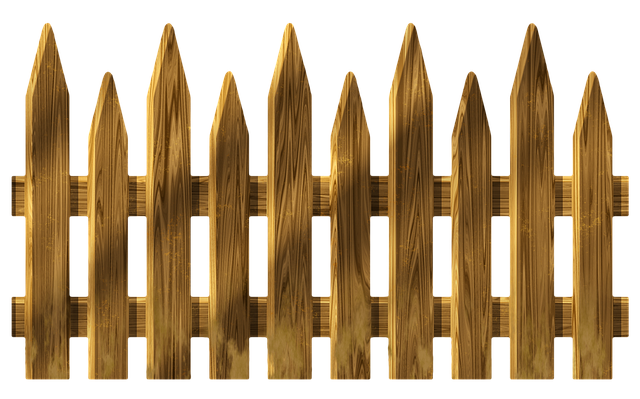In coastal regions, where harsh weather conditions and salt air pose unique challenges, durable wooden fencing emerges as a reliable solution. This article delves into the intricacies of selecting and maintaining wood fences designed to withstand the rigors of the coast. From understanding environmental factors that impact fencing to exploring long-lasting materials and installation methods, we offer comprehensive insights. Learn how these strategies not only ensure structural integrity but also enhance property aesthetics and value.
- Understanding Coastal Fencing Challenges
- Benefits of Durable Wooden Fencing
- Material Considerations for Coastal Environments
- Installation Techniques for Longevity
- Maintenance Strategies to Preserve Wood
- Esthetic Appeal and Property Value Enhancement
Understanding Coastal Fencing Challenges
Coastal areas present unique challenges when it comes to fencing due to harsh weather conditions, salty air, and regular exposure to moisture. Traditional fencing materials often struggle to withstand these elements, leading to frequent replacements and increased maintenance costs. The primary concerns include corrosion, rot, and damage from strong winds and storm surges.
Durable wooden fencing designed for coastal environments needs to be specifically treated to resist these issues. This involves using weather-resistant wood species like cedar or treated timber, along with protective coatings and finishes that can barrier against moisture and salt. By understanding these challenges and selecting the right materials, homeowners and property managers can invest in a robust and long-lasting fence that offers both aesthetic appeal and practical protection for years to come.
Benefits of Durable Wooden Fencing
Durable wooden fencing offers an array of advantages for coastal areas, where traditional materials may struggle against the harsh marine environment. Firstly, wood is a naturally sustainable and renewable resource, making it an eco-friendly choice. This is especially important in coastal regions, where environmental preservation is crucial. Secondly, treated and durable wooden fences can withstand high winds, heavy rainfall, and salty air—common challenges faced by coastal communities. They provide long-lasting protection for properties, ensuring privacy and security without compromising aesthetics.
Moreover, these fences contribute to the local ecosystem by creating habitats for various coastal species. The organic nature of wood allows plants to grow and thrive, enhancing biodiversity. Additionally, its visual appeal adds character and charm to coastal landscapes, blending seamlessly with the natural environment.
Material Considerations for Coastal Environments
When considering materials for fencing in coastal areas, it’s crucial to select options that can withstand the unique challenges presented by the environment. Salty air, high humidity, and regular exposure to moisture can accelerate the deterioration of traditional fencing materials. Wooden fences, in particular, require careful selection and treatment to ensure longevity.
Durable, rot-resistant woods are ideal for coastal settings. Options like cedar, redwood, or treated pine have natural resistance to decay and insect infestation, making them excellent choices. These woods not only withstand the harsh coastal climate but also add aesthetic appeal with their beautiful, distinctive grains. Proper sealing and regular maintenance further extend the lifespan of wooden fences in these environments.
Installation Techniques for Longevity
When installing durable wooden fencing in coastal areas, several techniques can enhance longevity and withstand harsh environmental conditions. One effective method is pre-treatment of the wood before installation. This involves pressure washing to remove dirt and debris, followed by applying a protective coat of sealant or paint. Such treatments create a barrier against moisture and salt spray, which are primary causes of wood decay in coastal regions.
Additionally, proper fence posting and anchoring are vital. Using concrete bases for posts ensures they remain stable and secure, even during high winds and storms. Space between posts should be consistent to allow for expansion and contraction of the wood without warping or splitting. Regular inspection and maintenance, such as re-tightening hinges and replacing worn-out components, contribute to the fence’s overall durability.
Maintenance Strategies to Preserve Wood
Wooden fencing, while aesthetically pleasing, requires careful maintenance in coastal environments where it’s constantly exposed to salt air and moisture. To preserve your durable wooden fence, regular cleaning is essential. Start by removing any visible debris or dirt using a soft-bristled brush or garden hose. Then, apply a high-quality wood cleaner designed for use on coastal fencing to help remove stubborn stains and algae growth.
After cleaning, sealing the wood is crucial. Use a water-based, marine-grade sealer specifically formulated for exterior use. This will create a protective barrier against moisture and UV rays, extending the life of your fence. Finally, consider annual inspections to identify any damaged or rotting sections, addressing them promptly to avoid further deterioration. Regular maintenance, combined with high-quality materials, ensures your coastal wooden fencing remains strong and beautiful for years to come.
Esthetic Appeal and Property Value Enhancement
Durable Wooden Fencing enhances the aesthetic appeal of coastal properties, offering a natural and visually appealing barrier. The warm tones and textures of wood complement the surrounding landscape, creating a harmonious outdoor space. A well-designed fence can serve as a focal point, adding character and charm to any coastal property. This is especially important for areas with strict zoning regulations where the exterior design of homes and their surroundings are carefully considered.
Beyond aesthetics, a robust wooden fence significantly boosts property value. It provides privacy, security, and a defined boundary, which are highly desirable features for potential buyers. The increase in value isn’t just about visual appeal; it’s also about practicality. A well-maintained wooden fence shows commitment to property upkeep and can attract buyers seeking a secure and aesthetically pleasing outdoor environment.
